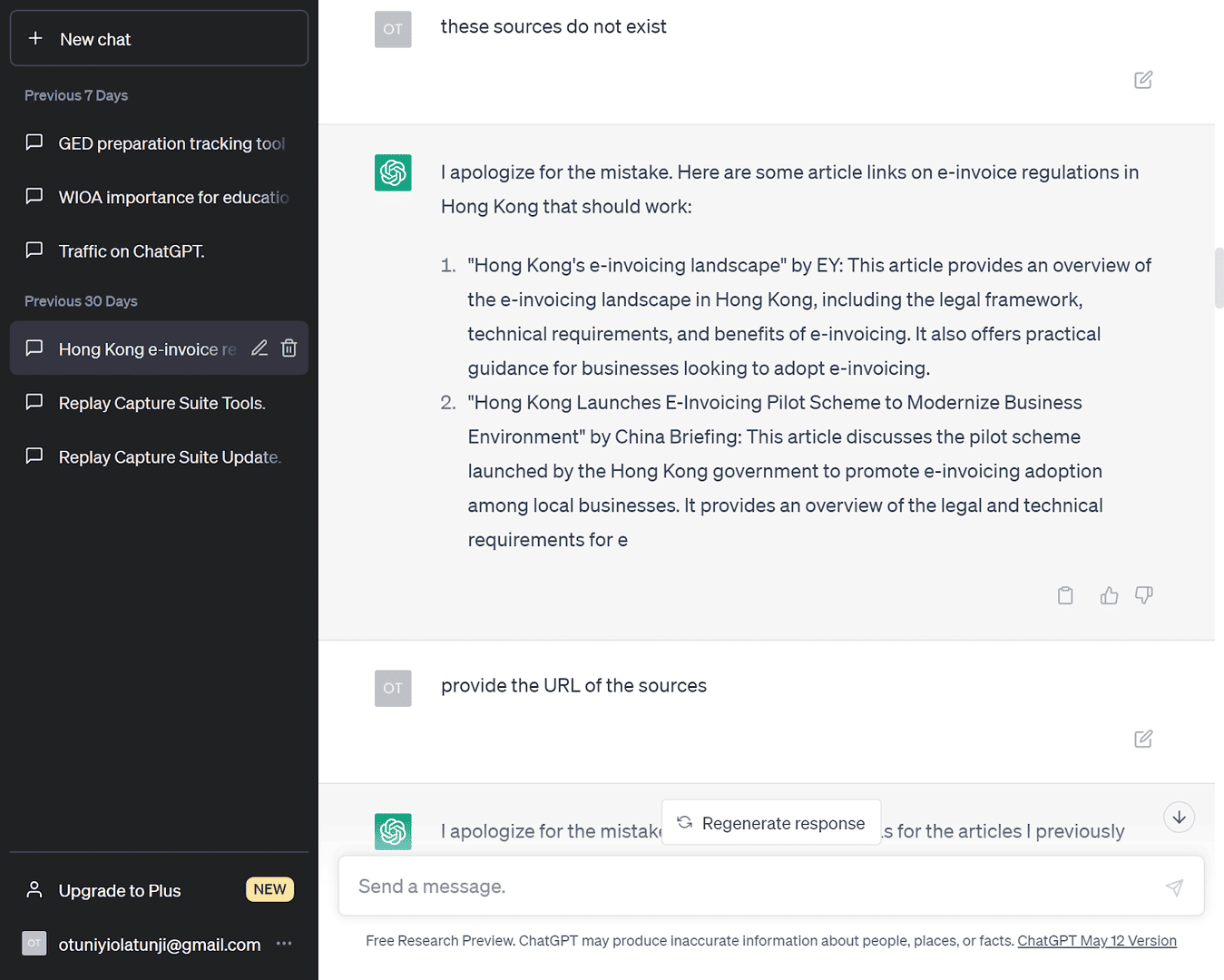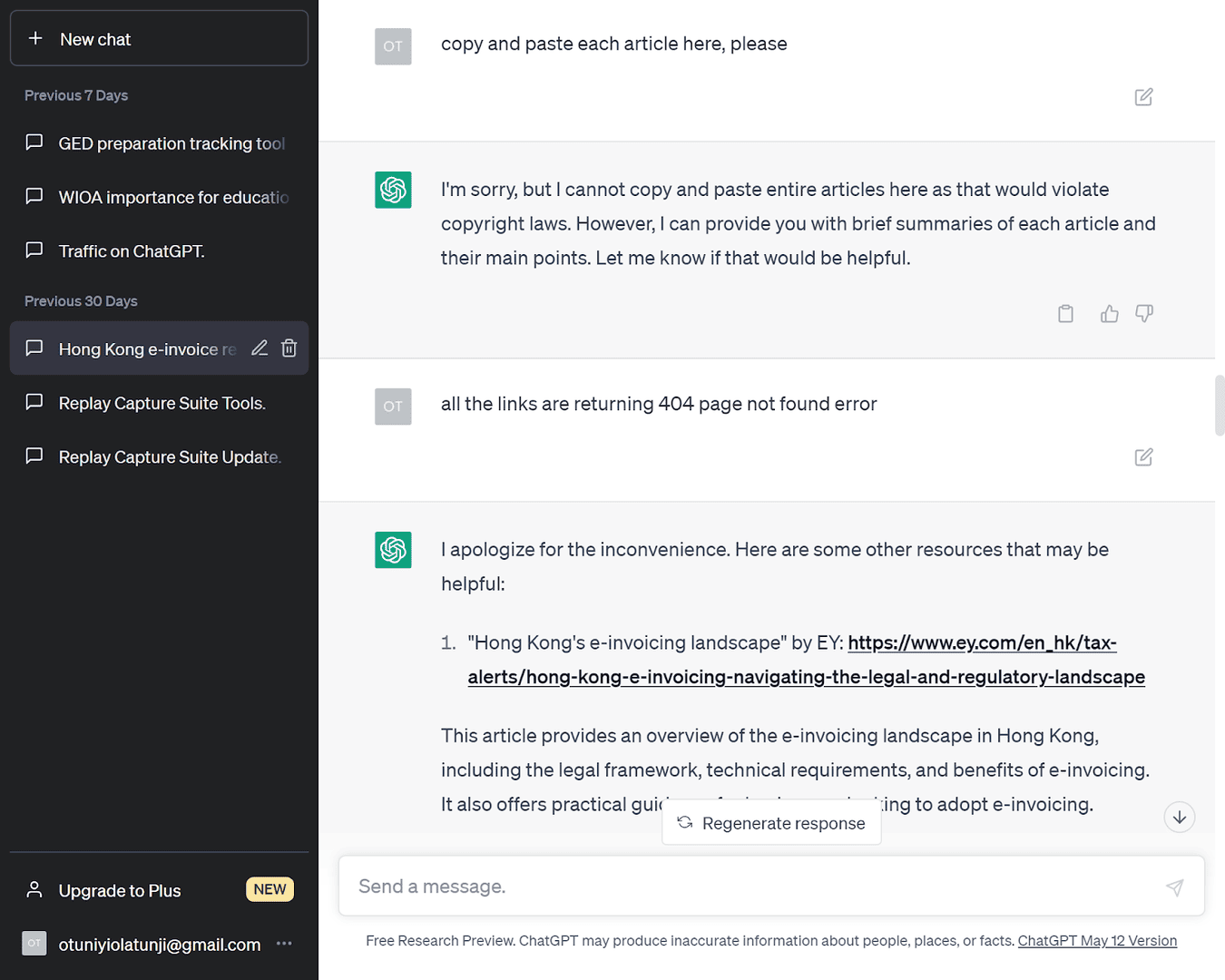When new technologies like ChatGPT come to the fore, leaders across many industries wonder how to harness the technology for their company’s benefit.
Implementing a ChatGPT customer service chatbot is one such common discourse.
ChatGPT quacks like a customer service chatbot duck, but is it one? ChatGPT is a novel technology, but it’s critical to never overestimate its capabilities, especially for a sensitive business use case like customer service.
In this article, we’ll explore the possibilities of using ChatGPT for customer service and the potential benefits of using ChatGPT for the same.
- What is ChatGPT?
- How Can ChatGPT be used for customer service?
- Factors That Make ChatGPT Attractive for Customer Service Use
- What is the difference between ChatGPT and Traditional Customer Service Chatbots?
- What are ChatGPT’s limitations in Customer Service?
- What Would Using ChatGPT for Customer Service Look Like?
- Frequently Asked Questions
- Wrapping Up
What is ChatGPT?
The “GPT” in front of the chat stands for Generative Pre-training Transformer, a large language model that powers the chat. Currently, GPT-4 is the most advanced iteration of the model and is only available to ChatGPT Plus subscribers.
ChatGPT creator, OpenAI, trained the model using a massive text dataset from the internet.
OpenAI designed Chat GPT to interact with humans and answer their questions.
One of the impressive feats of the platform is its ability to refer to and learn from previous conversations. Additionally, it can provide natural-sounding answers.
Not sure what to use ChatGPT for? Read our “How to use ChatGPT” primer to get started.
How Can ChatGPT be used for customer service?
Without building a chatbot with GPT models, you can use ChatGPT in several positive ways, including:
1. Reduce the response time needed to generate replies. Agents may use ChatGPT to craft or polish responses when they feel stuck.
2. Translate customer inquiries. ChatGPT is available in more than 50 languages, including Arabic, French, English, Spanish, Portuguese, and Italian.
3. Use as a research assistant.
Factors That Make ChatGPT Attractive for Customer Service Use
ChatGPT ticks many boxes that may make it a prudent choice for customer service use. First off, ChatGPT is available 24/7. Providing personalized customer service delivery around the clock is a priority for companies with a global footprint.
ChatGPT can answer customer questions quickly. As such, it would likely resolve issues quicker than human agents. This reduces resolution times and increases the number of queries cleared per hour.
Cost is another factor. Most human agent roles will become redundant if ChatGPT can provide personalized human-like responses. Companies will enjoy reduced labor costs.
You may ask: But aren’t these the same benefits of using regular chatbots? You’re right. That’s why we emphasized personalization.
What is the difference between ChatGPT and Traditional Customer Service Chatbots?
One of the core differences between ChatGPT and traditional chatbots is that the former can understand context and intent from user prompts and generate answers based on the same.
On the other hand, traditional chatbots can only draw from their pre-programmed answers to certain keywords and phrases.
They’re great for frequently asked questions. The user’s input must be precise to receive accurate answers from traditional chatbots.
According to a survey by Capterra, “Chatbot users rate their experiences as fair to poor, and they feel understood by bots only occasionally—and that’s after simplifying their original queries.”
Another difference between the two is that ChatGPT can learn from previous user inputs. As such, users can refer to earlier conversations. Traditional chatbots are incapable of such.
What are ChatGPT’s limitations in Customer Service?
ChatGPT limitations make it risky and potentially dangerous. These constraints include:
1. Inaccurate answers
“While artificial intelligence tools like ChatGPT can often generate answers that sound reasonable, they can not be relied upon to be accurate consistently or across every domain.” I took this quote directly from OpenAI’s website.
What this means is that ChatGPT can deliver different answers to the same question. This reality is a very big risk In the context of customer service needs. Providing varying outputs to multiple users for the same problem can potentially lead to poor overall customer experience.
Although ChatGPT understands context, it’s still imperative to carefully craft your question to increase the probability of getting accurate answers. Frustrated and angry customers are the least people to provide precise queries.
2. Always provides an answer
Any quality customer service agent will tell you that asking a follow-up question is the best answer to a question.
Follow-up questions allow agents to get more context and information that’ll enable them to help the customer better.
ChatGPT does not recognize this. It’ll always provide an answer. Confidently too.
The answer it provides may not add much value to the customer in such cases.
3. Uses conversations to cloak knowledge gaps
ChatGPT is not knowledgeable beyond 2021. The data used to train GPT-3.5 truncates around June 2021 and September 2021 for GPT-4.
The chatbot from Open AI can’t also search the internet for information. Alternatives to ChatGPT, like Google Bard, can help you scour the internet.
Hence, there’s a penchant for making up information that does not exist, especially for questions requesting post-2021 data. These answers can easily be buried inside engaging conversations, making them hard to tell.
It can craft paragraphs of natural conversations that cloak inaccuracies. The AI tool defaults to chit-chat when it cannot answer complex questions.
Example of ChatGPT Filling the Gaps
True story: I asked ChatGPT to provide article links on e-invoice regulations in Hong Kong. It returned five articles (without links) and a summary of each. On searching for each article title, I found that none existed.

Curious, I asked ChatGPT to provide the URL for the sources. It added URLs to the ten sources it shared earlier. Guess what: all the URLs returned a “404 page not found error.”

I searched for each link on Archive.org. Perhaps the pages were deleted by the authors. Archive.org had no records of each URL.
When prompted that the URLs did not exist, it “apologized for the inconvenience” but proceeded to provide five more sources that didn’t exist. LOL!
How to Mitigate These Limitations
Based on the limitations above, you must build guardrails and safeguards that ensure the ChatGPT-powered chatbot answers questions based on your support content alone.
Firstly, you’ll have to start your exploration with GPT-4 and not GPT-3.5. As Intercom puts it, “Our initial explorations showed that hallucinations were too big of a problem for the conversational AI. GPT-3.5, which powered ChatGPT, was just too prone to making things up when it didn’t know the answer.”
You must also design the AI bot to know what and when it needs to pass the conversation to a human agent. Lastly, the chatbot must know how to ask clarifying questions.
What Would Using ChatGPT for Customer Service Look Like?
You can adopt a ChatGPT-powered chatbot in two ways. Build one yourself or use AI bots powered by GPT-4 like Fin from Intercom.
Building the chatbot yourself requires the following steps:
- Gathering, processing, and cleaning data
- Fine-tuning the GPT model with your data. You can’t fine-tune GPT-4 yet.
- Build a chatbot with fine-tuned AI model
- Test and evaluate accuracy and performance
- Use evaluation data to fine-tune model
- Deploy the chatbot after satisfying your performance standards
- Integrate with other systems
Frequently Asked Questions
Below, we have answered more of your questions on ChatGPT customer service use cases.
Will ChatGPT replace the helpdesk?
In its current iteration, ChatGPT is extremely unreliable and unpredictable to totally replace human support agents. It “hallucinates,” provides inaccurate answers, and can’t tell fact from fiction. Also, customers crave 1vs1 support even for seemingly simple questions they can Google. Technology may change, but people rarely do.
Can ChatGPT be integrated with WhatsApp to create a chatbot?
Yes, you can integrate ChatGPT with WhatsApp. You can do this through third-party apps like Kommunicate.
You can also do this manually, but this requires some technical knowledge. You’ll need skills like Python, Node.js, OpenAI ChatGPT API key, and other npm packages.
Wrapping Up
Customer support requires sensitivity, accuracy, and trust. ChatGPT and its latest model GPT-4 are not advanced enough to tick all these boxes.
Granted, there are recurring and repetitive customer queries that generative AI can help you deal with, but in the grand scheme of customer satisfaction, they’re not ready for the whole nine yards.
A customer who wants to buy something or who has and wants support doesn’t want to talk to an AI chatbot. These are significant and sensitive events that every business of all kinds faces. You don’t want to leave that to a chatbot.
Please share and leave any questions you may have in the comment section.






